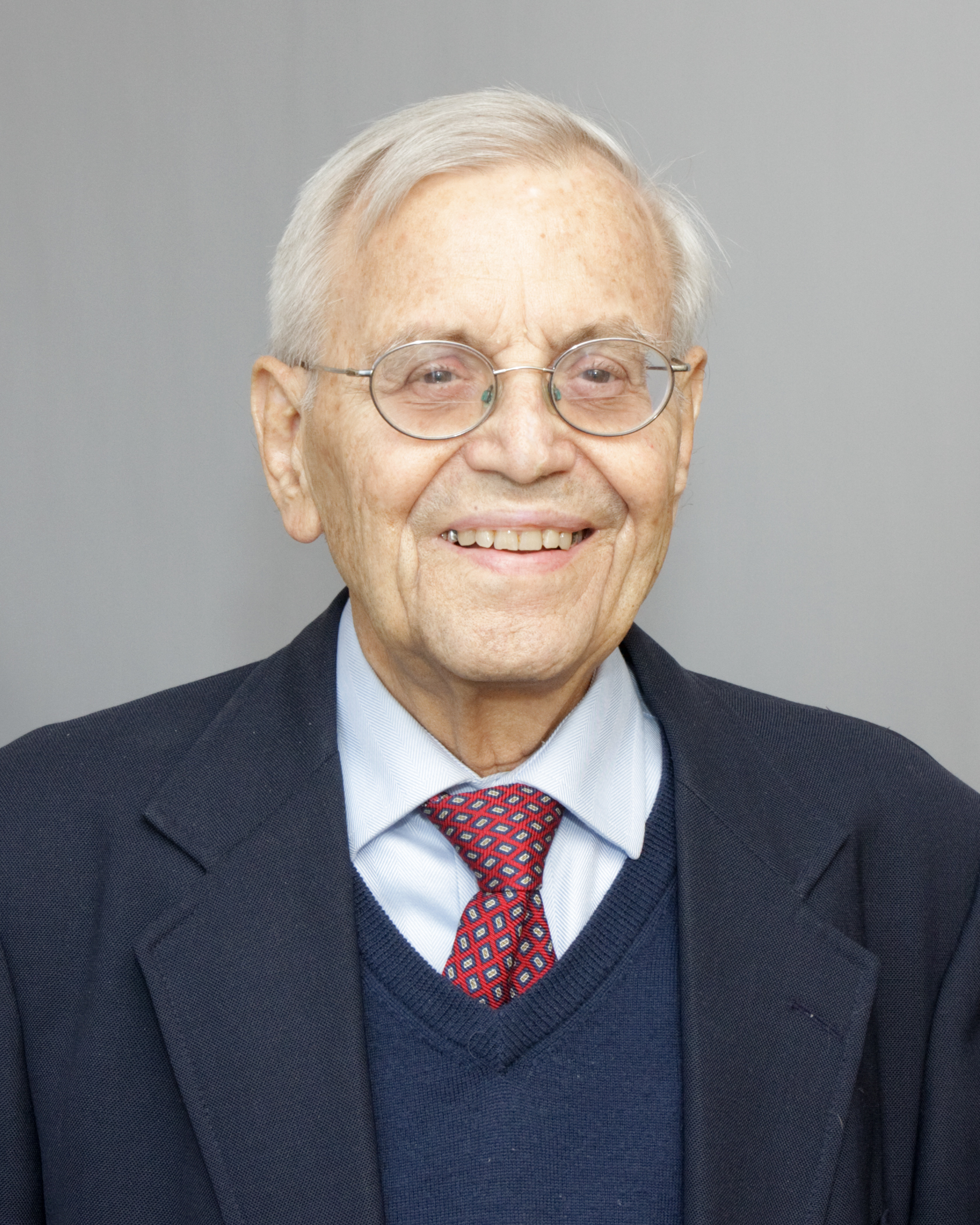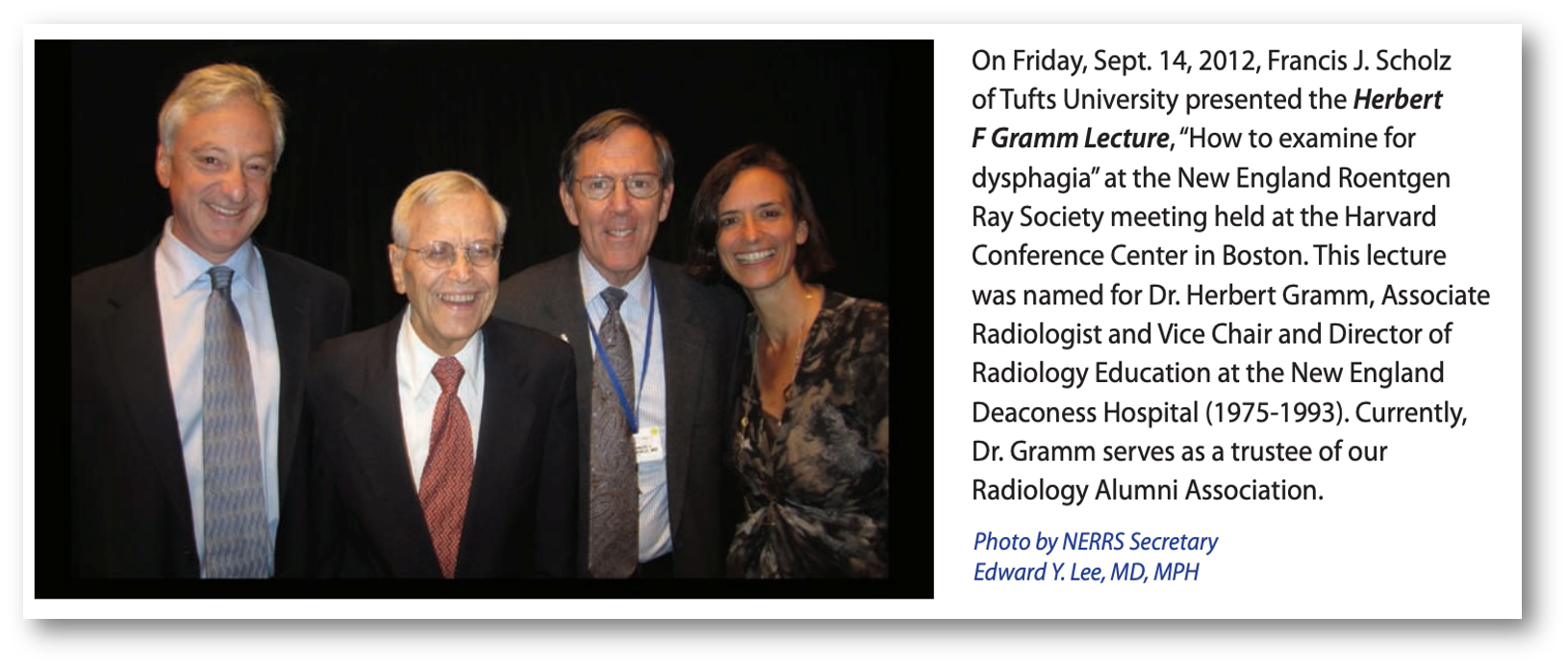The Radiology Education Academy is named for Herbert F. Gramm, MD, FACR, FSAR, for his passion for educating and mentoring the next generation of radiologists, his incredible teaching file collection, and his decades-long commitment to the Department of Radiology. As part of his storied career, Dr. Gramm served as Associate Radiologist and Vice Chair and Director of Radiology Education at the New England Deaconess Hospital from 1975-1993. He was one of our department's most celebrated and influential pioneers.
Early Beginnings 
I became interested in radiology as a specialty at Tufts University School of Medicine when retrieving films from the file room for discussion at morning rounds at the Pratt Medical Service, where Dr. Alice Ettinger, then the chief of radiology, was a kind and supportive mentor. During my third and fourth years, I lived and worked as an intern at Faulkner Hospital, where I was provided room and board and a small stipend for performing laboratory and infusion services on nights and weekends, as well as working up surgical admissions.
As I often had to draw blood in the ER, I became friendly with the residents who would explain an interesting case and show me the X-rays. As there were often questions about the interpretation and there was no radiologist on site after 5 p.m. and on weekends, I would review the studies with Dr. Lloyd Hawes, the chief of radiology, before leaving the hospital in the morning for my medical school clerkships and lectures. When an elective clerkship with Dr. Hawes became available, I signed up based on his dedicated teaching and high regard by the medical and surgical staff. After a month, I was convinced that radiology was the specialty for me.
At that time, Dr. Hawes and Dr. Richard Schatzki at Mount Auburn Hospital ran a joint residency program and, through them, I got introduced to the New England Roentgen Ray Society when I helped Dr. Hawes, who was the treasurer, register members for the dinner and program.
Through Dr. Hawes, I once got to meet socially the three pioneers in Boston Academic Radiology who fled Germany and Austria from the Nazi terror. When a German radiologist visited Boston in 1958, Dr. Hawes invited the German-speaking radiologists, Drs. Ettinger, Fleischner, and Schatzki, to a party at his home in Wellesley to meet this visitor from Germany. He invited me to come along, as he didn’t speak German, so I could translate if necessary. Not a single word of German could be heard all evening—a reflection of what these outstanding and well-established academicians had to suffer by being uprooted from a promising career in what had been their home and jobs.
After internship and residency at Philadelphia General Hospital (where I worked with Drs. Mel Clouse and Ferris Hall) and two years in the Army in Germany at the 98th General Hospital, I returned to Boston for a fellowship in Gastrointestinal Radiology with Dr. Richard Schatzki, who would become my second mentor.
“The King of Barium”
In 1966, I joined Drs. Kellett and Bailey to become the third radiologist at the Deaconess Hospital and practiced there, and then at BIDMC after the merger, for 40 years. Radiology was still in its relative infancy back then. When I arrived, the department offered mainly plain films, fluoro, and IVPs. There was no nuclear medicine, mammography, or interventional; not even known were US, CT, or MR. Any special procedures, such as myelograms, bronchograms, and vascular studies were performed by surgeons with the radiologist doing the fluoroscopy and often ordered: “Take a picture now.” As I had acquired some limited experience in angiography during residency, fellowship, and in the Army, I was occasionally asked to perform these services on a limited basis.
Since neither of my colleagues had any training in mammography, I was asked to develop this service after taking courses with Dr. Egan in Atlanta and Dr. Wolfe in Detroit and soon had a thriving practice. We had the first hospital in New England to offer stereotactic breast biopsies later on. We bought a rectilinear scanner and offered thyroid, bone, and brain scans. I finally could devote myself to full-time GI radiology after the merger with Beth Israel Hospital, when our staff increased dramatically. I overheard one of our residents refer to me as “the king of barium.” I enjoyed the interactions with patients and teaching residents the double-contrast studies, which required considerable skill to perform correctly.
Words of Gratitude
 My greatest thanks go to the wonderful mentors and colleagues I was privileged to know and learn from. I thoroughly enjoyed working with my Deaconess colleagues, Drs. Clouse, Costello, and Kane, and being exposed to mentors like Drs. Russ Miller and John Kirkpatrick during my residency in Philadelphia. In addition, I was privileged to be taught by some of the first women pioneers in radiology, like Dr. Mary Fisher, who graduated first in her class at Bryn Mawr College and Columbia University College of Physicians and Surgeons. She was my mentor as an attending radiologist at Philadelphia General Hospital.
My greatest thanks go to the wonderful mentors and colleagues I was privileged to know and learn from. I thoroughly enjoyed working with my Deaconess colleagues, Drs. Clouse, Costello, and Kane, and being exposed to mentors like Drs. Russ Miller and John Kirkpatrick during my residency in Philadelphia. In addition, I was privileged to be taught by some of the first women pioneers in radiology, like Dr. Mary Fisher, who graduated first in her class at Bryn Mawr College and Columbia University College of Physicians and Surgeons. She was my mentor as an attending radiologist at Philadelphia General Hospital.
As a longtime member of the Society of Gastrointestinal Radiologists, the Boston Gut Club, and, for 13 years as a guest examiner at the oral boards for the American Board of Radiology in Louisville, I got to know many role models in GI and Abdominal Radiology. They are too numerous to mention except for my late friend, Hank Goldberg of UCSF, whom I visited several times and who was one of the first to establish a learning laboratory for trainees, which Dr. Jonny Kruskal, my most accomplished and famous resident, is planning to install at BIDMC.

